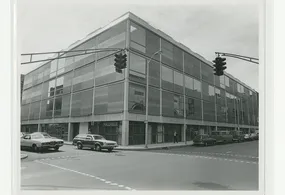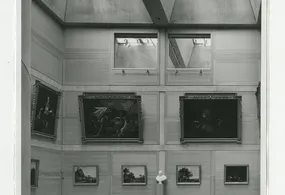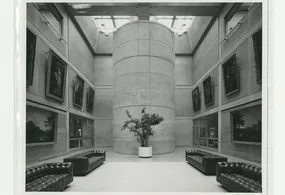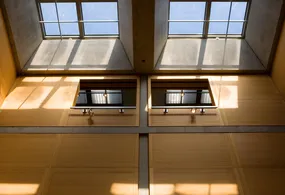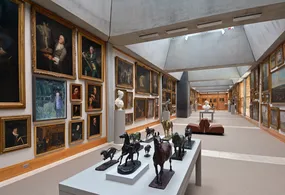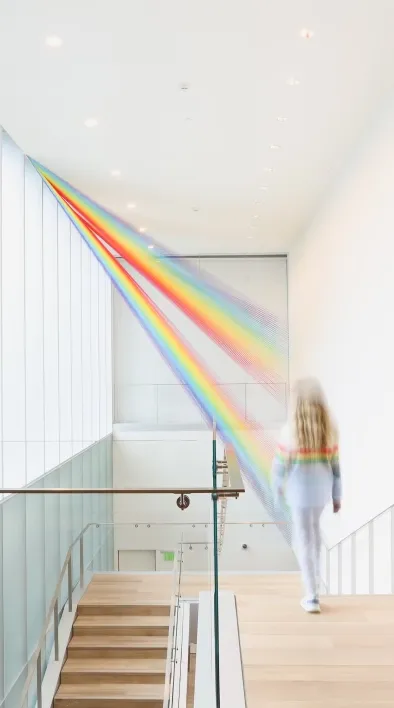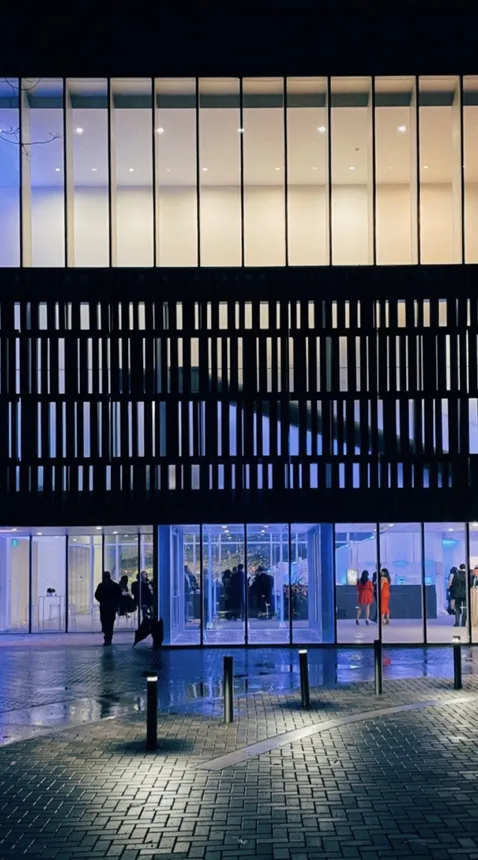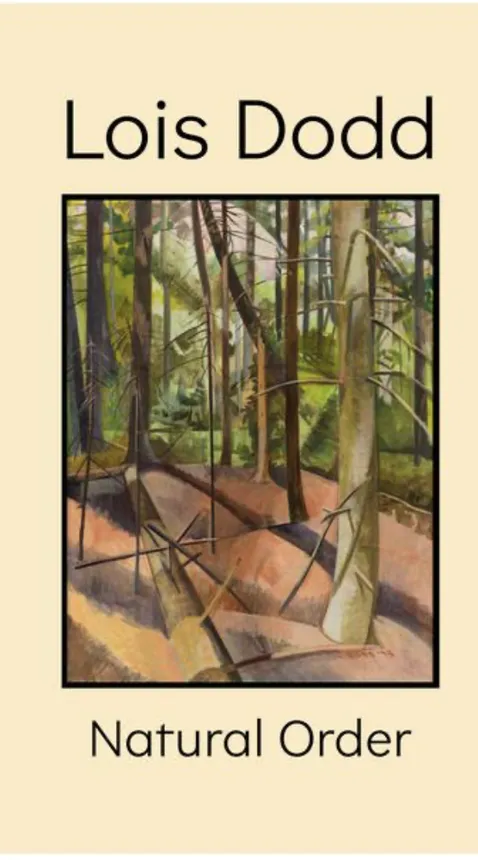Yale Center for British Art Exterior. Image credit: Exterior View (Autumn), Yale Center for British Art, 2008, photograph by Richard Caspole.
Location: 1080 Chapel Street New Haven, CT 06510
The Yale Center for British Art is currently closed to the public for a building conservation project. However, the exterior of the museum remains a visible presence in downtown New Haven. Visitors can park in metered spots on the nearby streets or in the Chapel-York Garage located at 150 York Street.
Description:
In 1966, Yale College alumnus Paul Mellon donated his collection of British art and books to his alma mater, along with funds to construct a museum to house the works and an endowment to support its operations. Louis I. Kahn (1901–1974) designed the building, now known as the Yale Center for British Art (YCBA). The YCBA is located across the street from Kahn’s first major commission, the Yale University Art Gallery, which opened in 1953.
Kahn taught architecture at Yale from 1947 to 1957, before returning to his hometown of Philadelphia to teach at the University of Pennsylvania. After his departure from Yale, Kahn secured numerous notable commissions, including the Salk Institute for Biological Studies and the Phillips Exeter Academy Library. Kahn passed away in 1974, 3 years prior to the completion of the YCBA in 1977.
The exterior of the YCBA is made of steel and glass while the interior has a muted natural color palette composed of concrete, linen, travertine marble, and white oak. The skylit galleries are diffused with natural light and Kahn intended artificial lighting to be used only on dark days and evenings. The YCBA is notable for being the first museum to incorporate retail shops within its original design.
The YCBA has undergone extensive building conservation campaigns. A three-phase project completed in 2016 focused on rehabilitation of the museum’s exterior and updates to the museum’s interior spaces and infrastructure. The current renovations include the replacement of the YCBA’s roof and original skylights, as well as upgrades to the gallery’s lighting system. The museum is expected to re-open in 2024.
Yale Center for British Art
Exterior del Yale Center for British Art. Crédito de la imagen: Vista exterior (otoño), Yale Center for British Art, 2008, fotografía de Richard Caspole.
Ubicación: 1080 Chapel Street New Haven, CT 06510
El Yale Center for British Art se encuentra cerrado al público debido a un proyecto de conservación del edificio. Sin embargo, el exterior del museo sigue teniendo una presencia notable en el centro urbano de New Haven. Los visitantes pueden estacionar en lugares con parquímetro en las calles cercanas o en el Chapel-York Garage ubicado en 150 York Street.
Descripción:
En 1966, Paul Mellon, exalumno del Yale College, donó su colección de arte y libros británicos a su alma mater, junto con fondos para construir un museo que albergara las obras y una donación para financiar las operaciones. Louis I. Kahn (1901-1974) diseñó el edificio, ahora conocido como el Yale Center for British Art (YCBA). El YCBA se encuentra frente al primer encargo importante de Kahn, el museo Yale University Art Gallery, inaugurado en 1953. Kahn enseñó arquitectura en Yale de 1947 a 1957, antes de regresar a su ciudad natal de Filadelfia para dar clases en la Universidad de Pensilvania. Tras su paso por Yale, Kahn recibió numerosos encargos notables, entre ellos, Salk Institute for Biological Studies y Phillips Exeter Academy Library. Kahn falleció en 1974, 3 años antes de la finalización del YCBA en 1977.
El exterior del edificio está hecho de acero y vidrio, mientras que el interior tiene una paleta de colores naturales apagados compuesta de hormigón, lino, mármol travertino y roble blanco. Las galerías iluminadas por tragaluces rebosan de luz natural; Kahn pretendía que la iluminación artificial se utilizara solo en días oscuros y por la noche. El YCBA se destaca por ser el primer museo que incorpora tiendas dentro de su diseño original.
El YCBA ha sido objeto de extensas campañas de conservación de edificios. Un proyecto de tres fases finalizado en 2016 se centró en la rehabilitación del exterior del museo, en la ampliación de los espacios interiores y en la infraestructura. Las renovaciones actuales incluyen el reemplazo del techo del YCBA y los tragaluces originales, además de mejoras al sistema de iluminación de la galería. La reapertura del museo está prevista para 2024.
